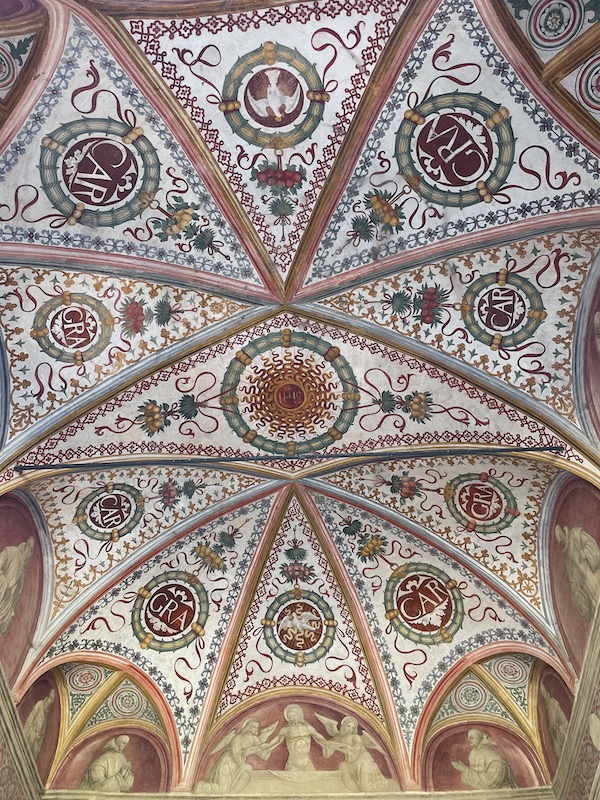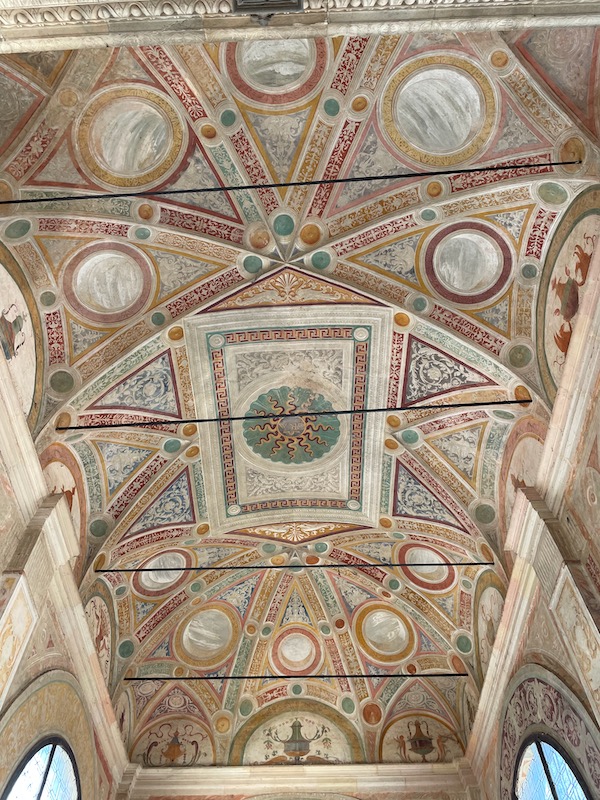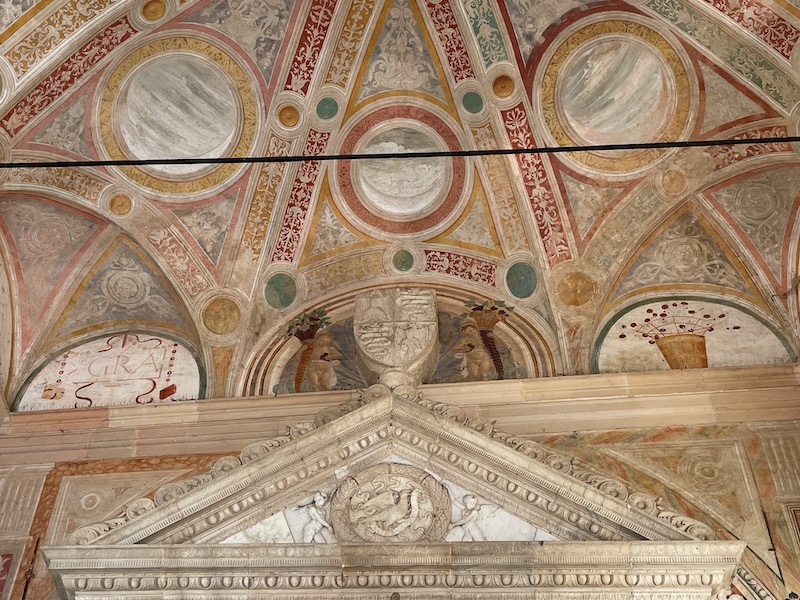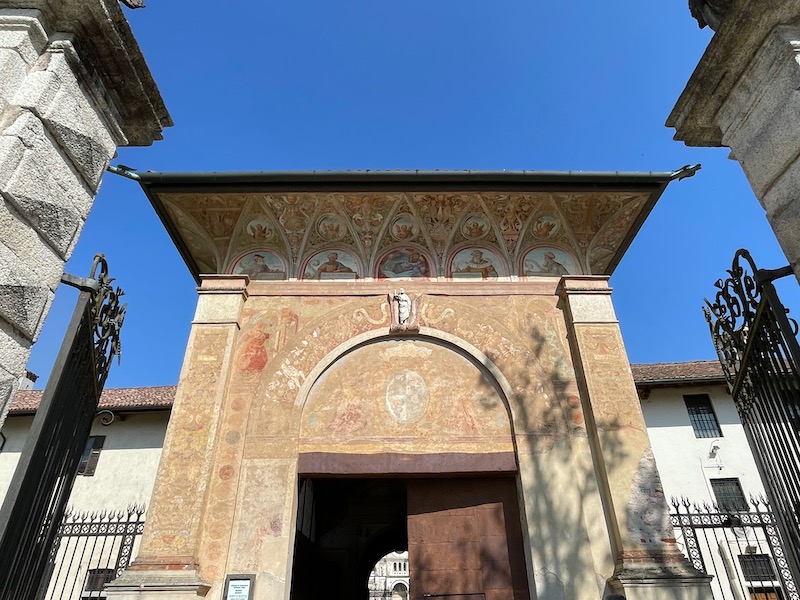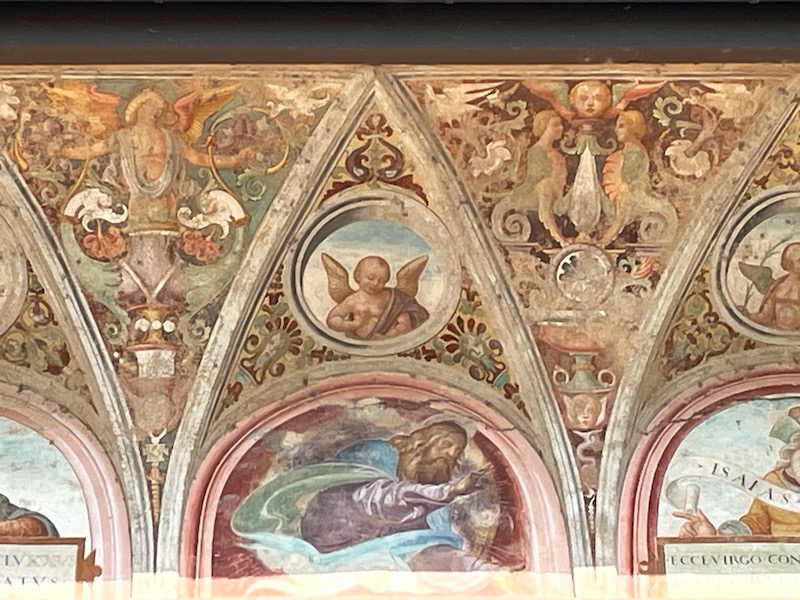Our Blog - Lombardy 2025 - Certosa di Pavia Monastery, Italy
The Certosa di Pavia Monastery was commissioned by Gian Galeazzo Visconti, the first Duke of Milan, in 1396. There is a bit of history on why the monastery was built here. After deposing this uncle, the former head of the Visconti family, in 1385, he decided to keep his court in Pavia (instead of Milan). The following year, the people of Milan decided to rebuild their cathedral. Gian wanted a central part of the new cathedral being a funeral monument to Gian Galeazzo's father, but there was strong opposition to this by the people in Milan. Ultimately, he decided to build a new church in Pavia, which would serve as a mausoleum for the Visconti dynasty. The church was the last part of the complex to be built. It was designed as a grand structure with a nave and two aisles (a bit unusual for the Carthusian Order of monks). The Gothic nave was completed in 1465.
Looking at the façade of the church, you can tell that it is highly decorated and made of marble. In the 15th century, marble was not abundant around Certosa, so the marble was supplied by the same group supplying marble for the Milan Cathedral. The monastery had an interesting history as well ... changing from Carthusian's to Cistercians in 1784 (Emperor Joseph II of Austria expelled the Carthusian monks) and then 5 years later by the Carmelites. The monastery was closed in 1810 and reopened by the Carthusians again in 1843. It was taken by the Italian State as a national monument in 1866 although it continues to this day to be an active monastery, housing Cistercian monks since the 1960s. A bit of trivia: In 1946, the illegally-exhumed body of Benito Mussolini was discovered in the complex and 2 Franciscan friars were charged with assisting in the concealment of the body.
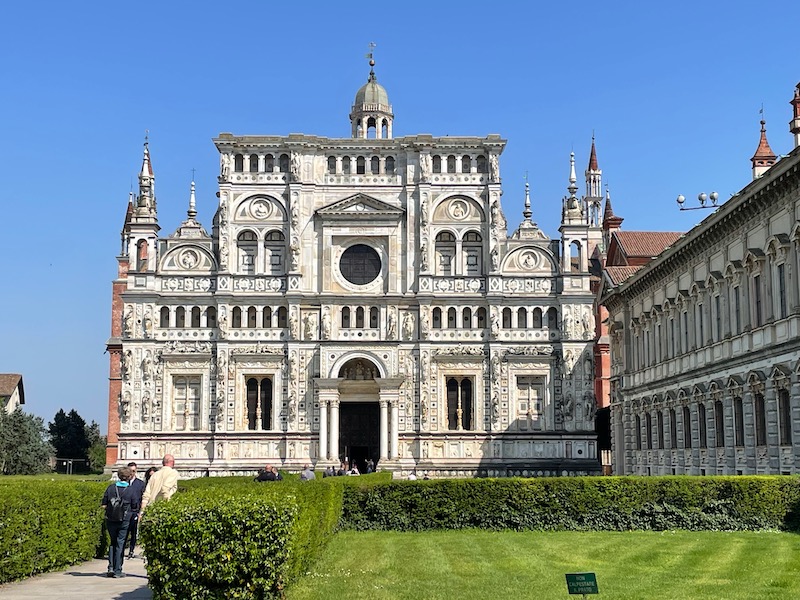
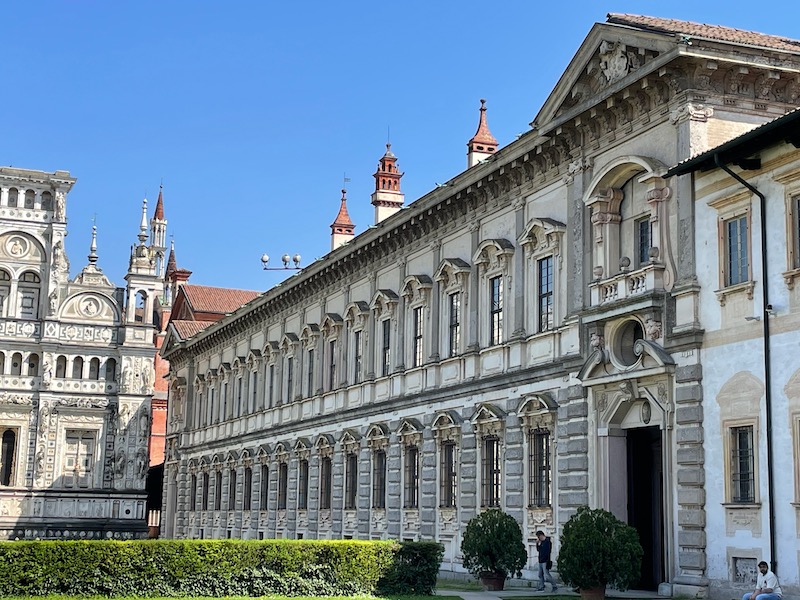
We quickly went through the large building to the right of the church, which houses a couple museums. The ground floor contains a collection of plaster casts of the sculptures of the church. Making plaster casts (which has been done since the Renaissance) has 2 purposes: first is to allow the public to see the decorative elements up-close, and the second is to show how the originals deteriorated over time. Of the 260 plaster casts, most come from the façade of the church. Here you can see how these are 3D sculptures showing various scenes.
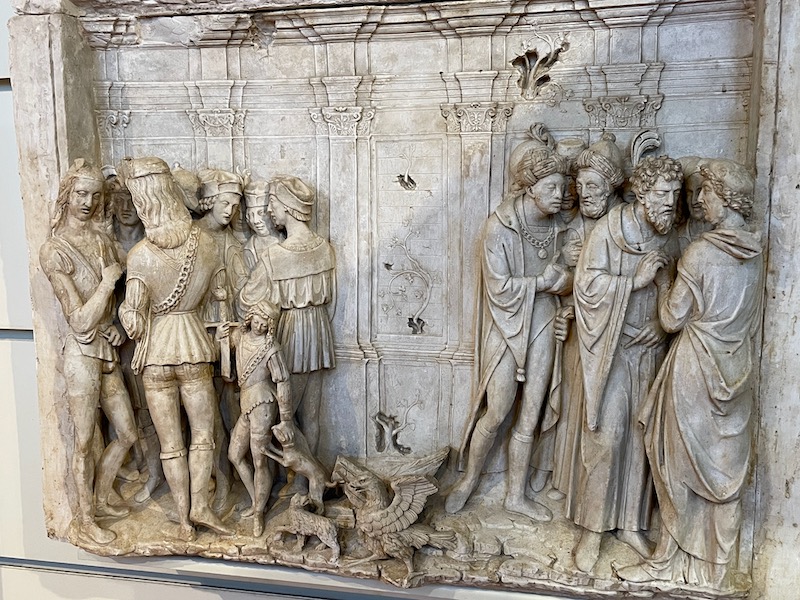
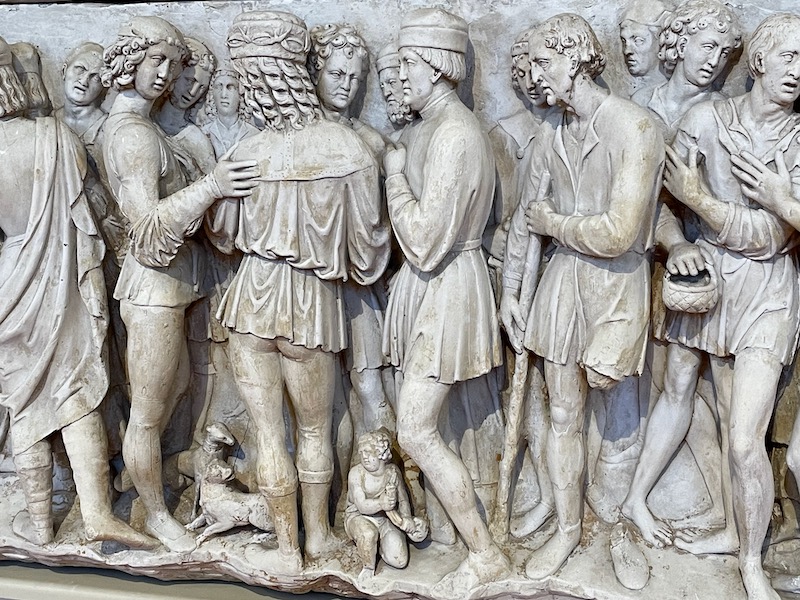
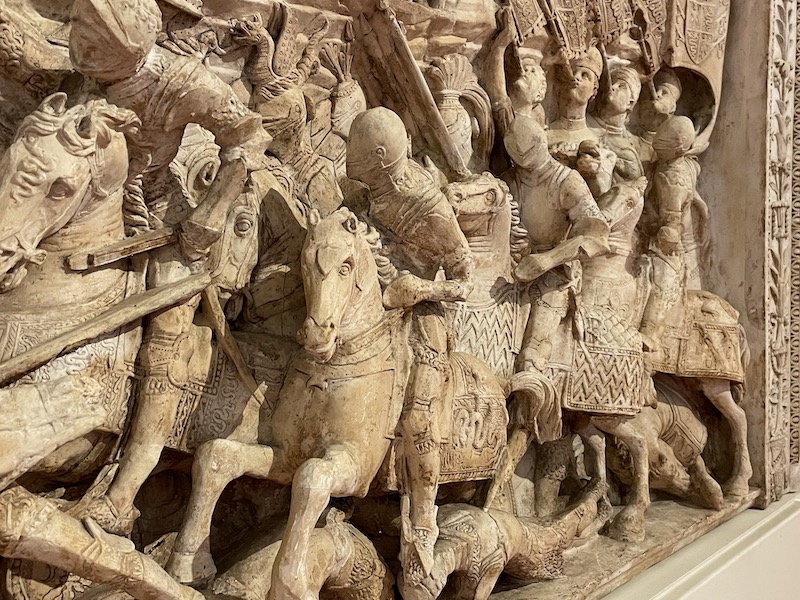
Now, back to the church. The façade, created by superimposing simple rectangles, is full of decorations, a typical procedure of Lombard Renaissance architecture and is mainly made of white marble, green stone, and pink/red Egyptian porphyry. The pink/red porphyry is seen in the decorative carved columns in the windows. There are lots of "pops" of green, mostly in circles, all across the front.
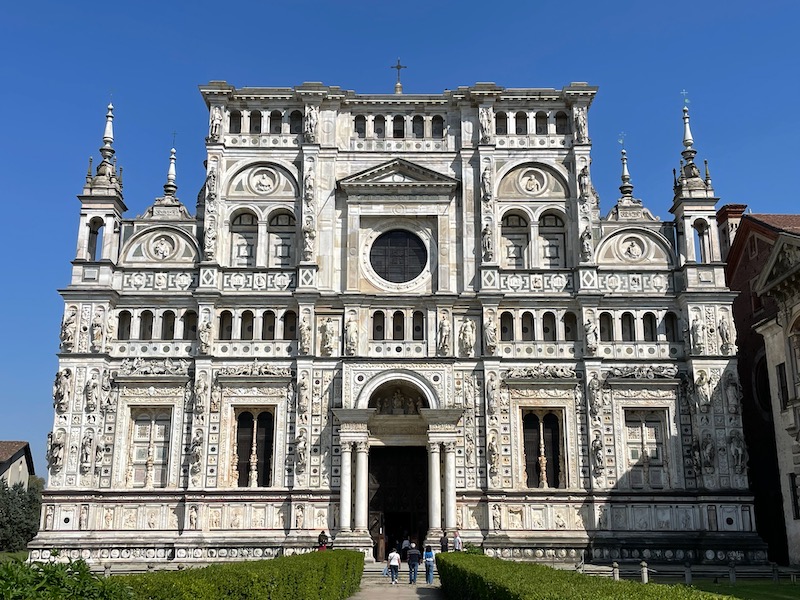
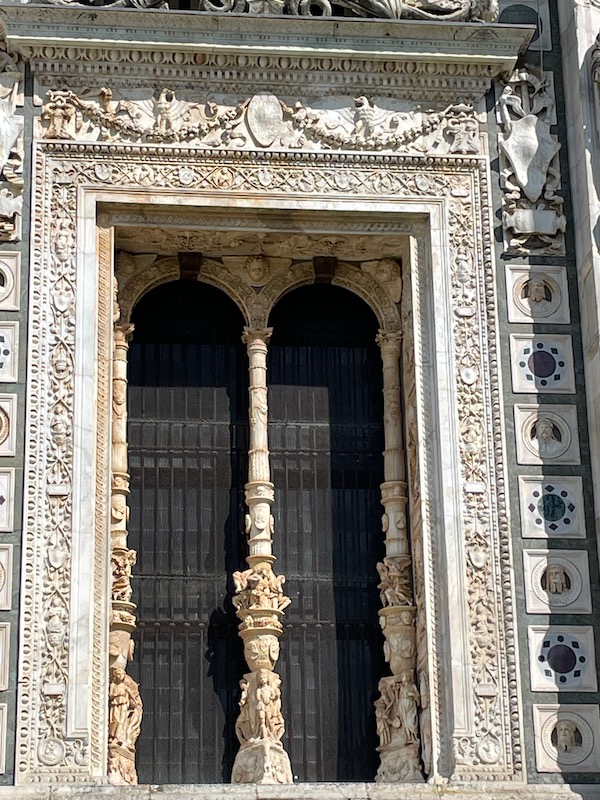
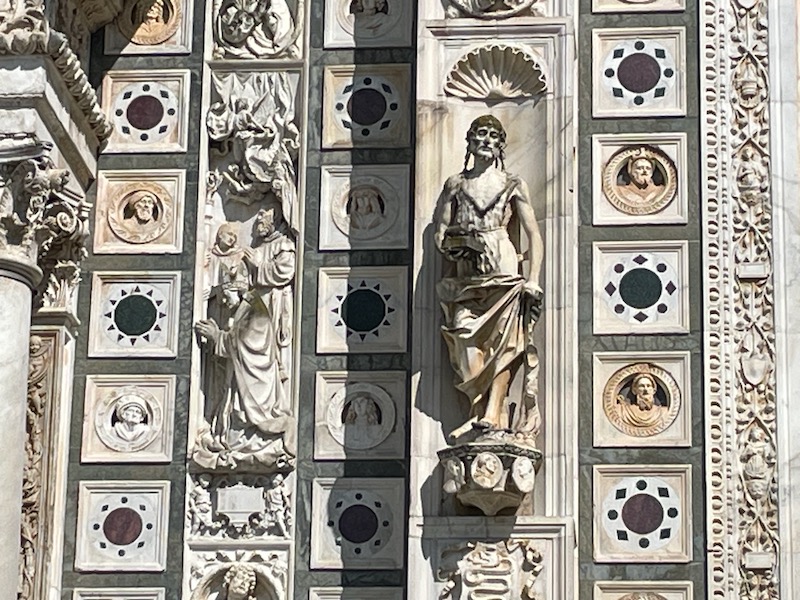
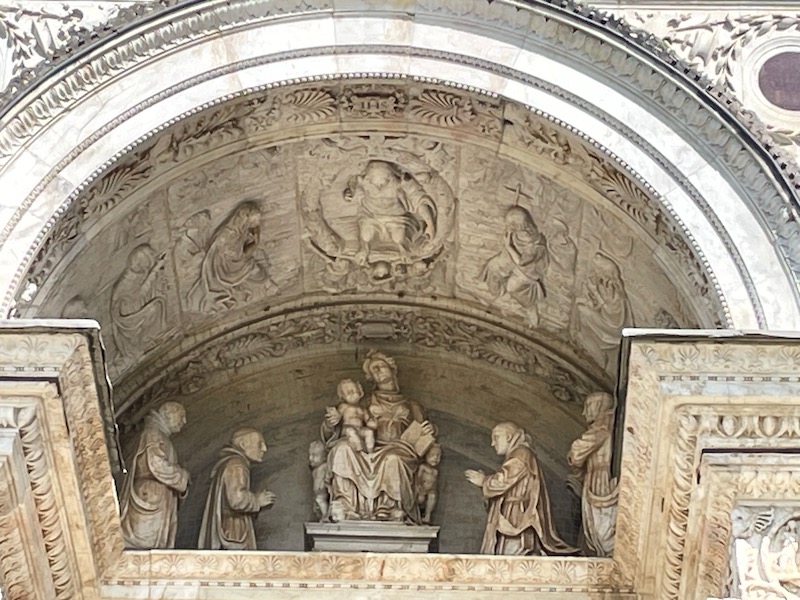
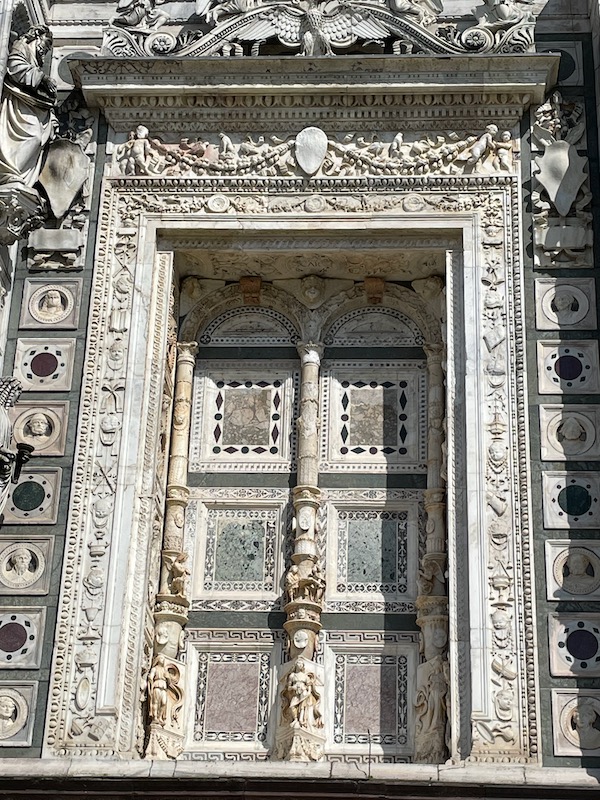
These are some of the panels that were cast and shown in the museum.
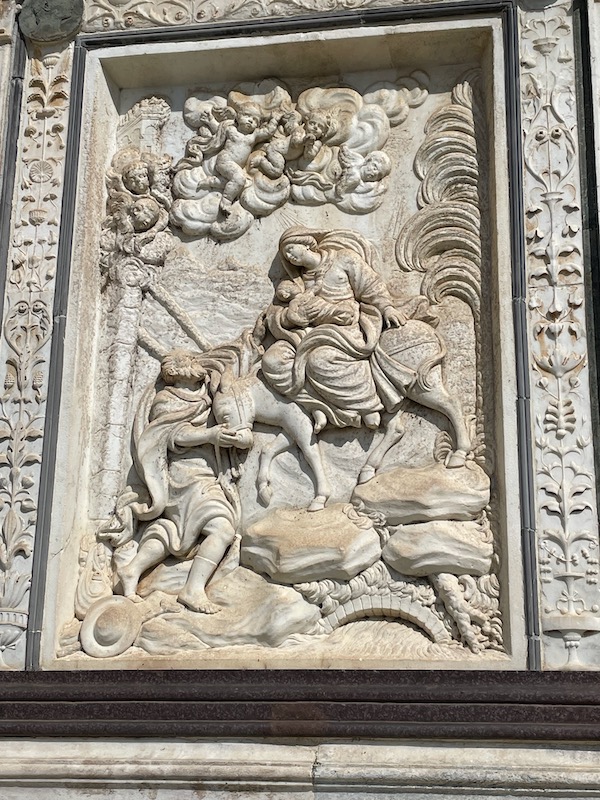
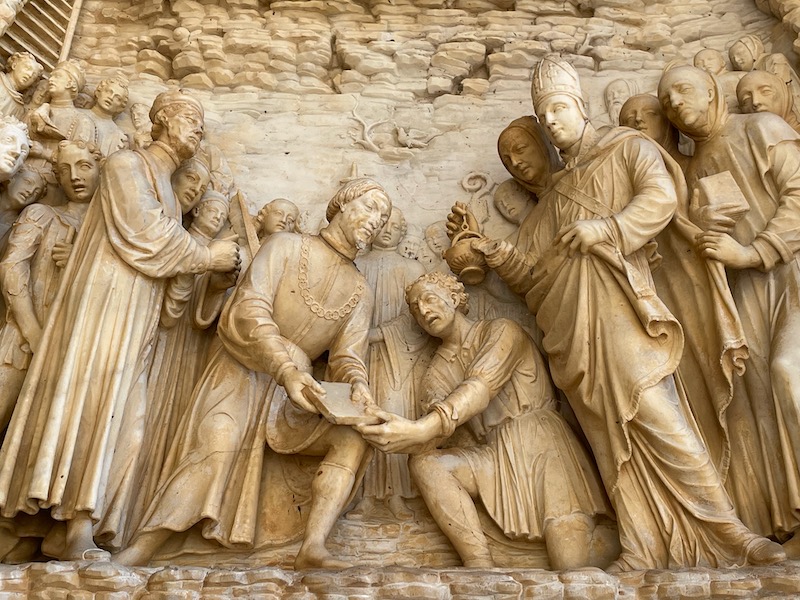
Here you can see the name with the side aisles, with very tall painted Gothic vaults.
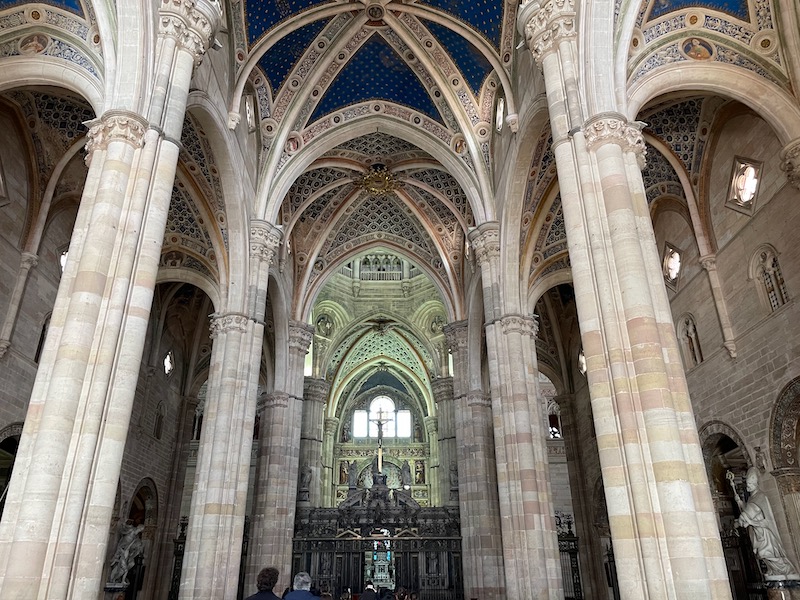

This stained-glass window, dating from 1483, shows saints Gervasius and Protasius, martyrs from the 2nd century.
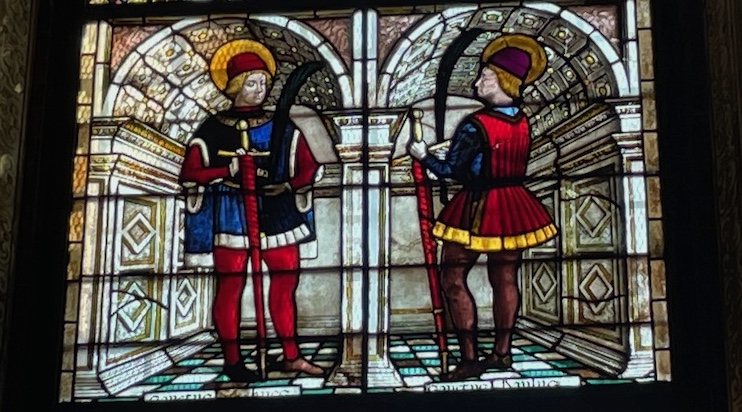
There are a couple chapels with painted domes, both of these show a religious scene along with donors on either side.
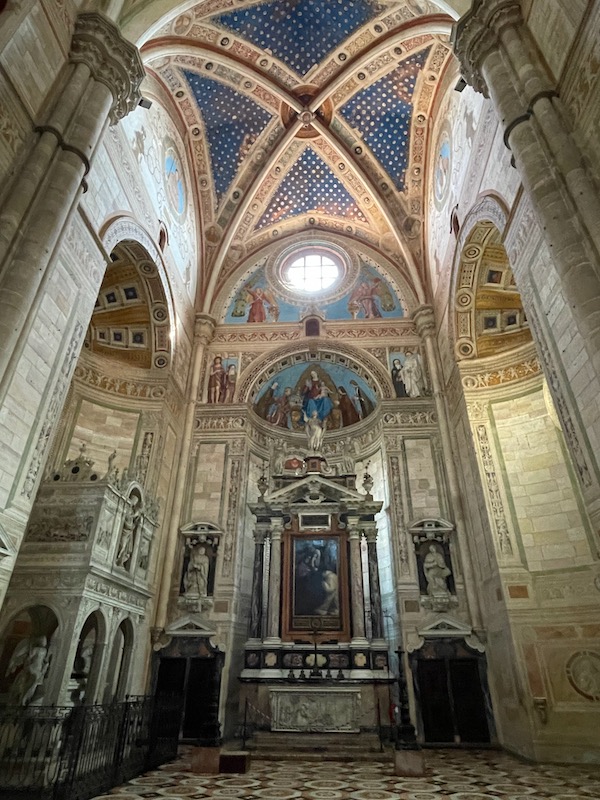
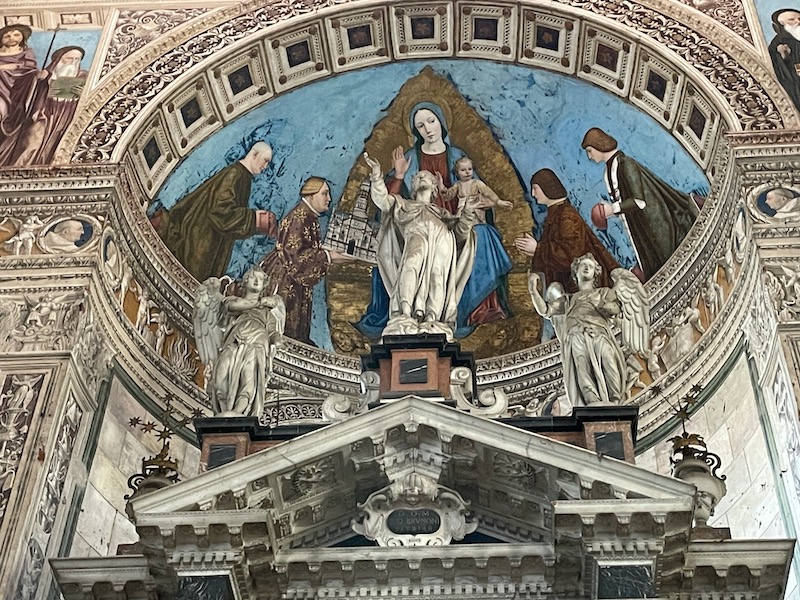
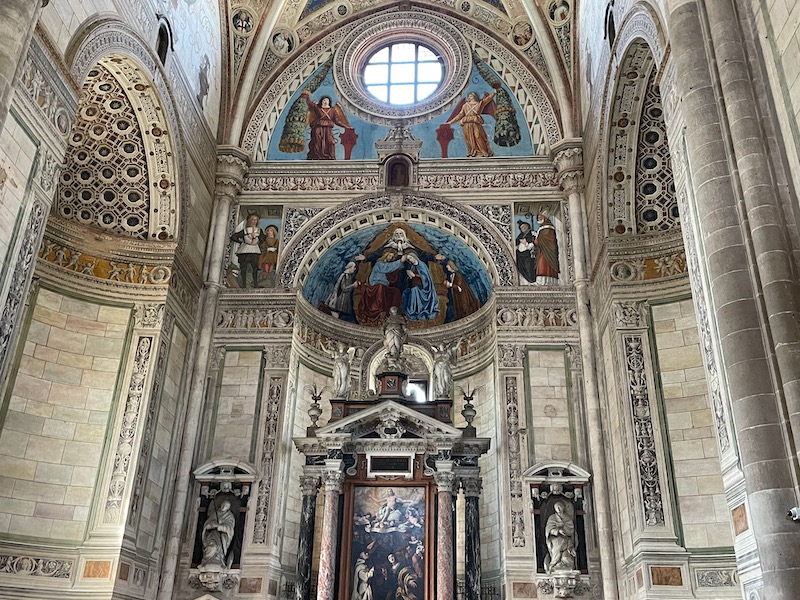
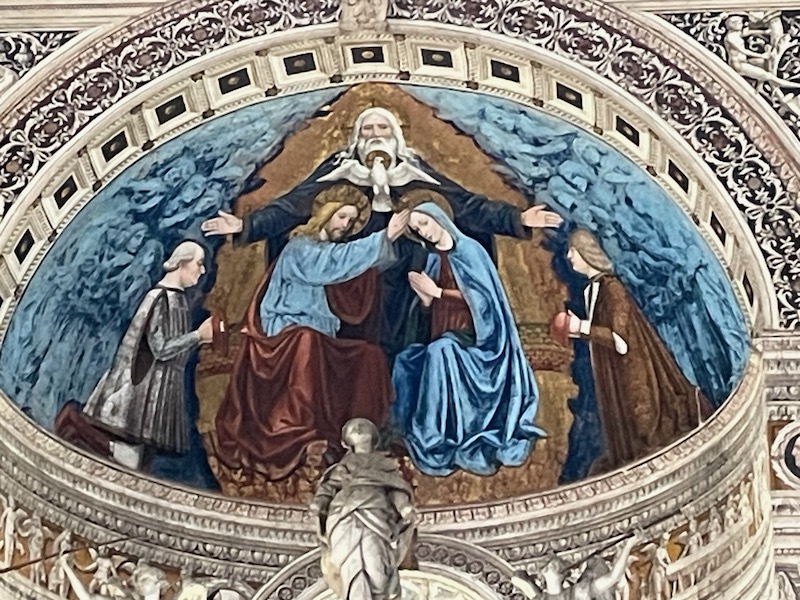
This is the tomb of Duke Gian Galeazzo Visconti, the first Duke of Milan.
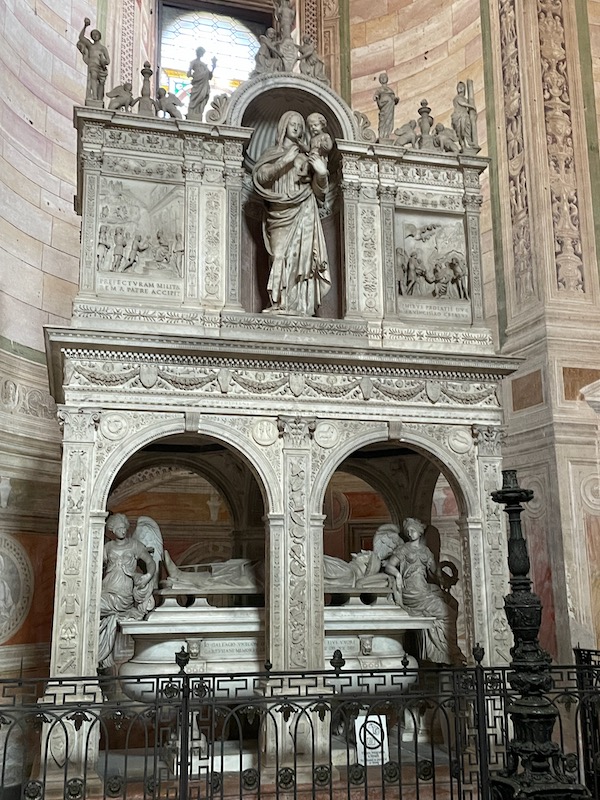
The dome in the transept is highly frescoed, dating from 1599.

While I wasn't impressed with too many of the altars, this one caught my attention with the amazing work of semiprecious stones and polychrome marble (dating from 1648).

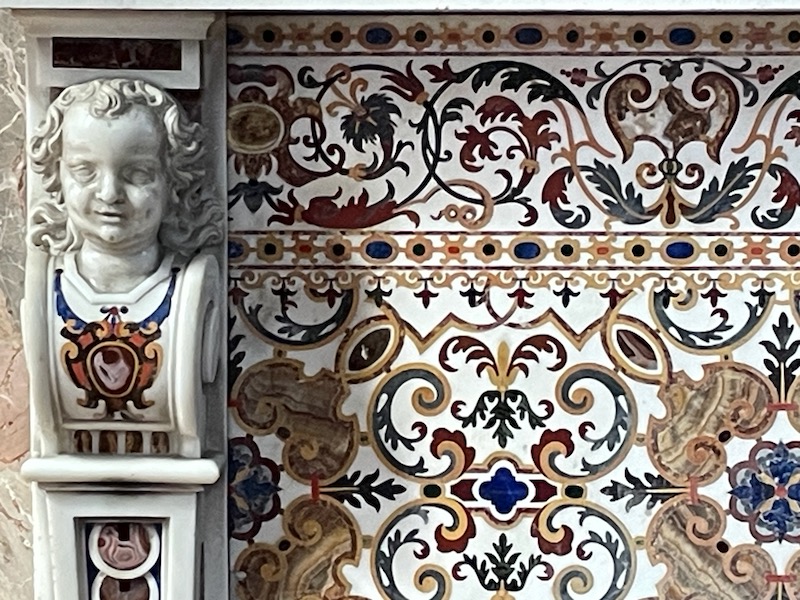
I had to wait a few minutes to enter the presbytery, as it was closed and I could only enter with a "guided visit by the monk". I headed in but just took pictures as the tour was in Italian. Every inch of the area is covered by frescoes from the Renaissance period. It is a cycle with scenes from the New Testament. The large high altar has a large marble dome on top with inserts in marble and precious stones, completed in 1568.
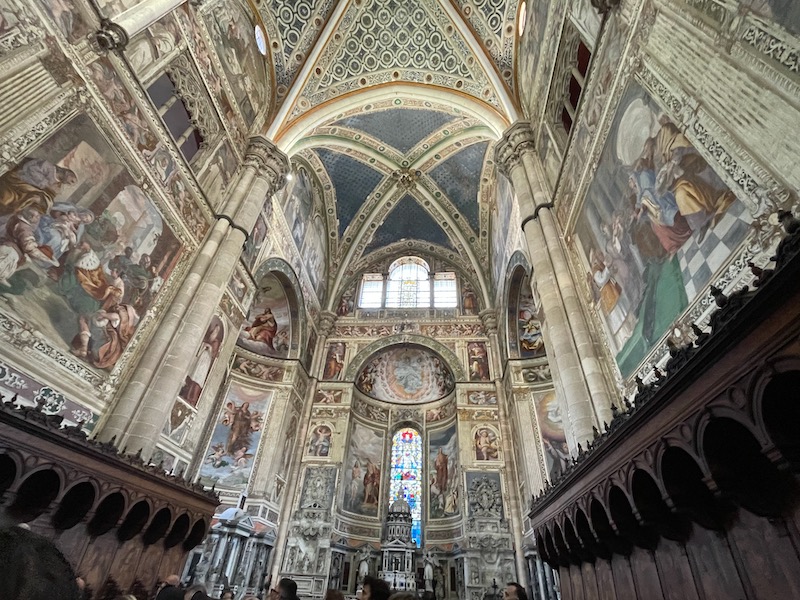
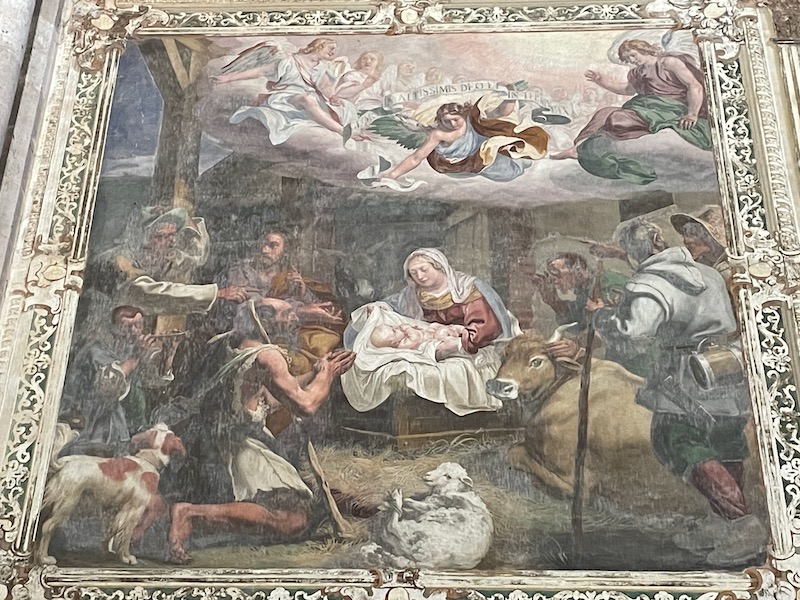
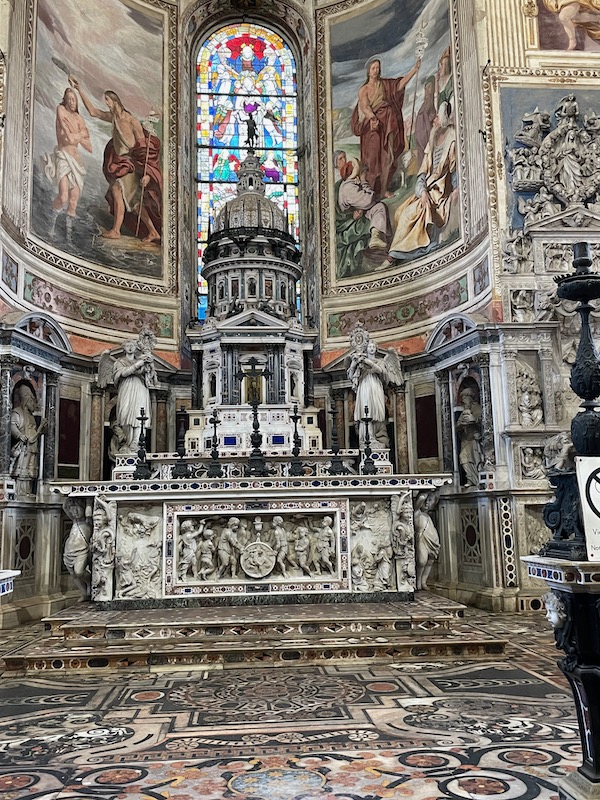
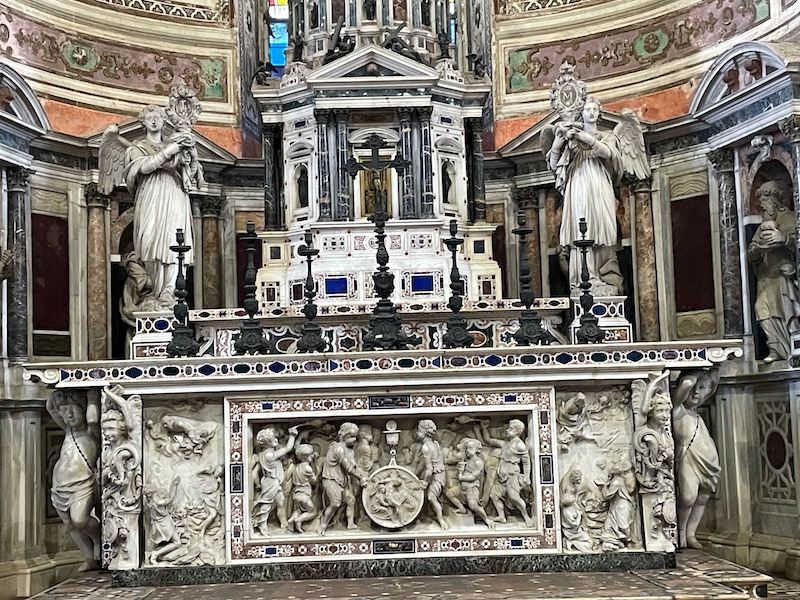
As with many churches, the choir stalls are impressive as well, with inlays depicting saints or biblical characters, each of which shows architectural or natural settings behind them in Renaissance style (these date from 1486).
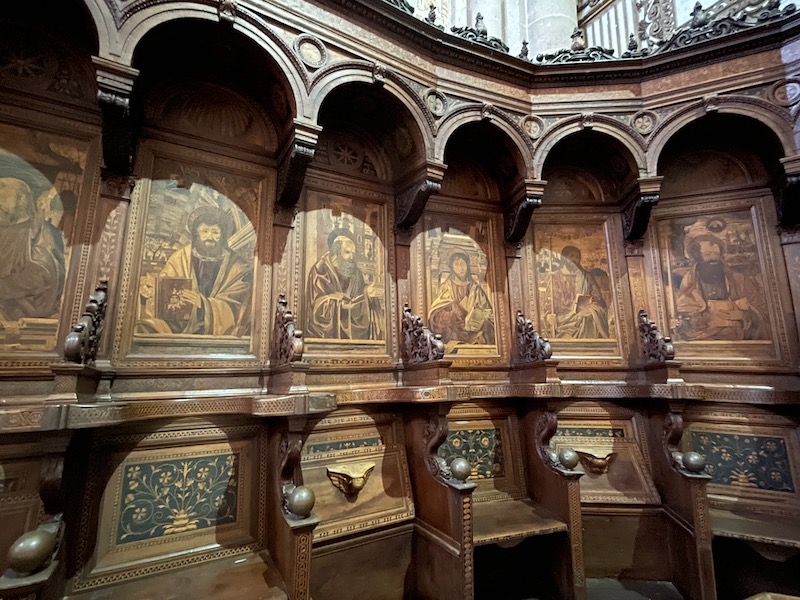
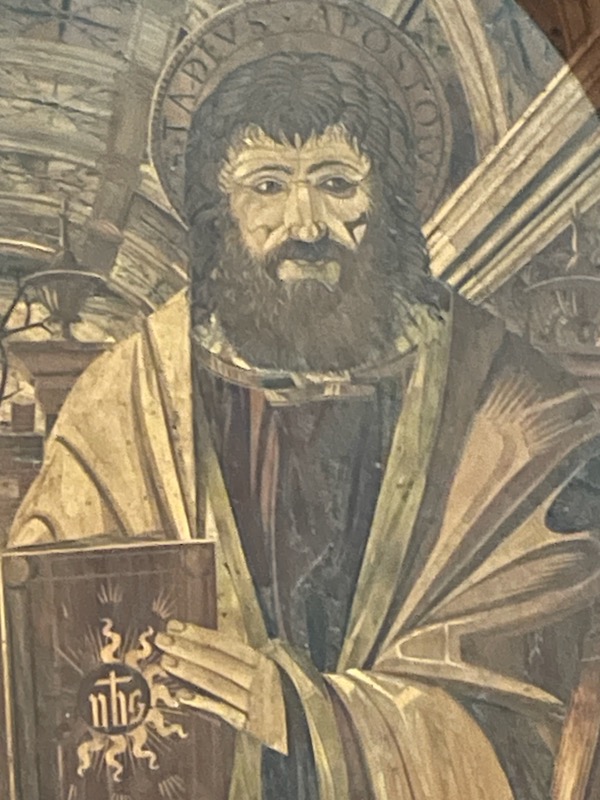
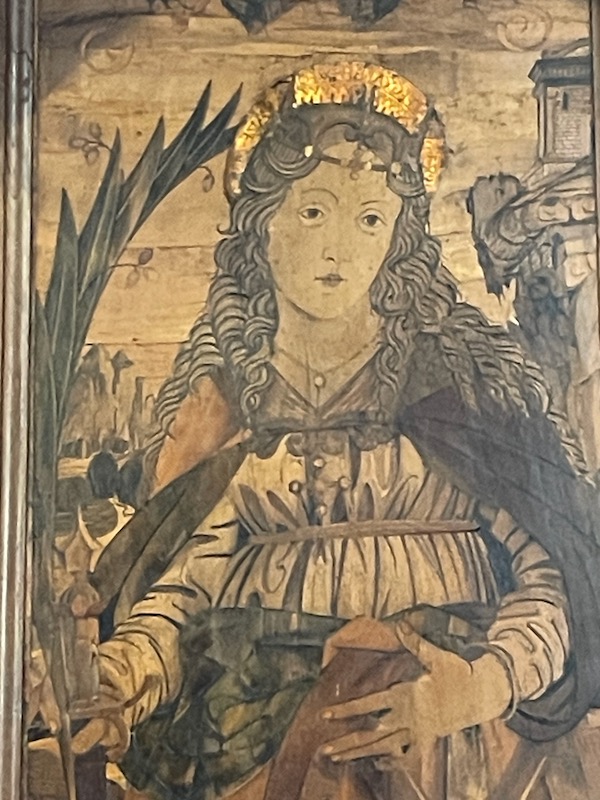
The monastic complex is accessed through a Renaissance vestibule, frescoed both inside and out. The entire interior is covered with Renaissance motifs in bright colors and decorated with the monogram GRA-CAR (“Gratiarum Chartusia”, Certosa delle Grazie). In the faded entrance lunette, two angels hold the coat of arms of the patron Gian Galeazzo, with the Visconti snake and the imperial eagle. The upper decoration, laid out by Bernardino de Rossi in 1508, is better preserved.
